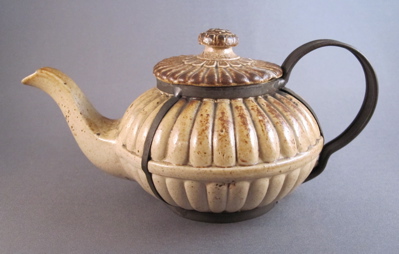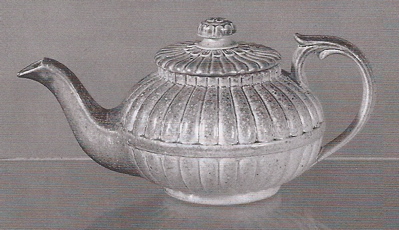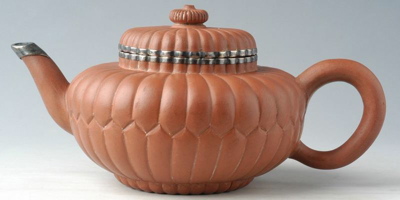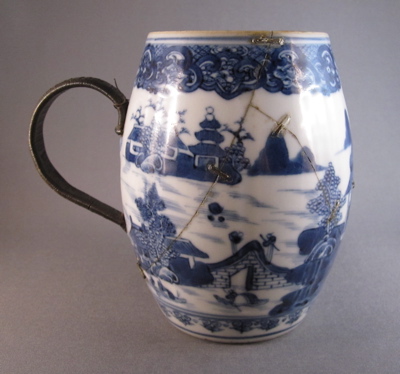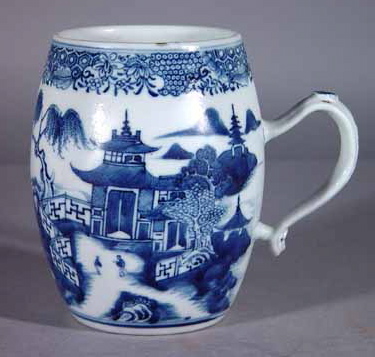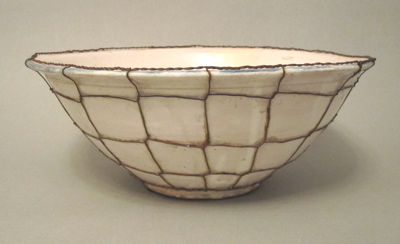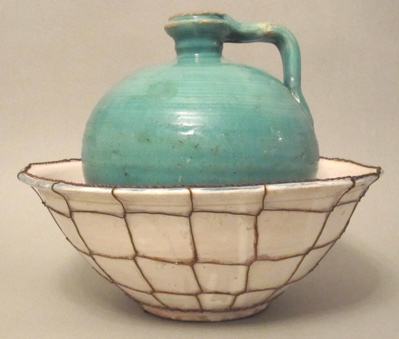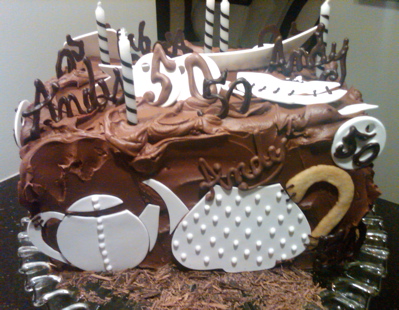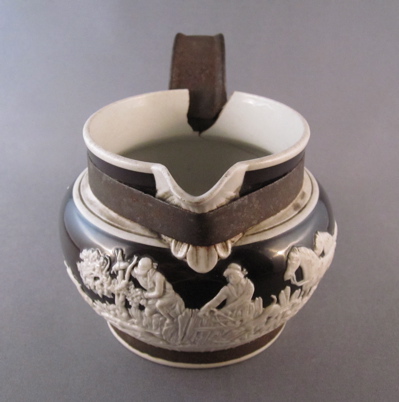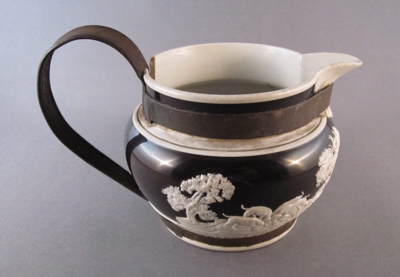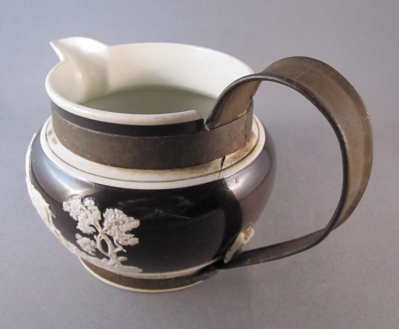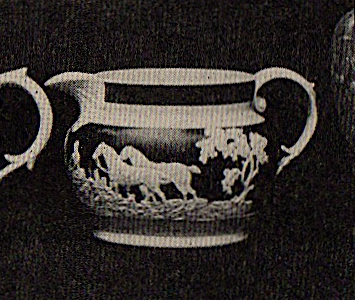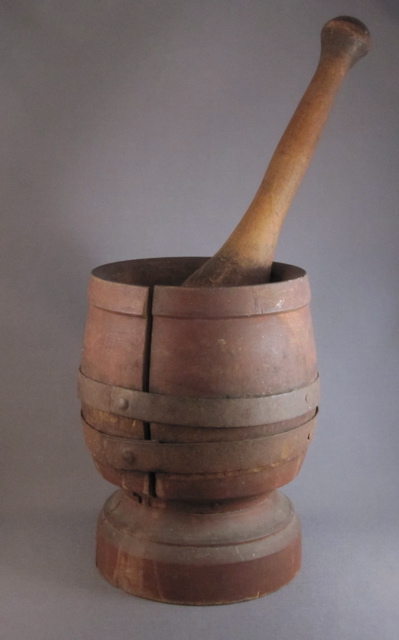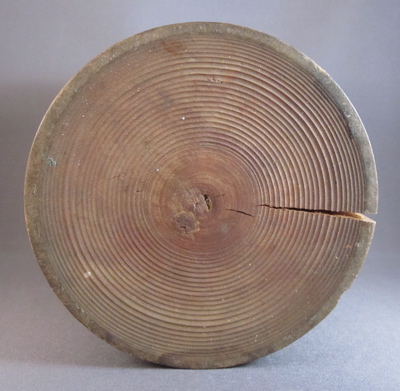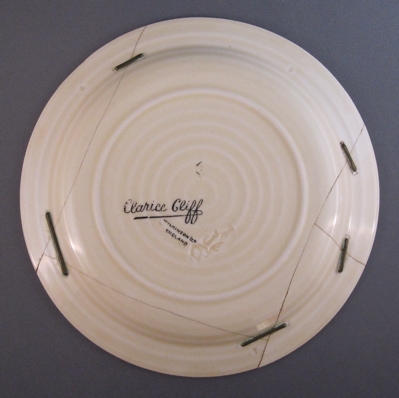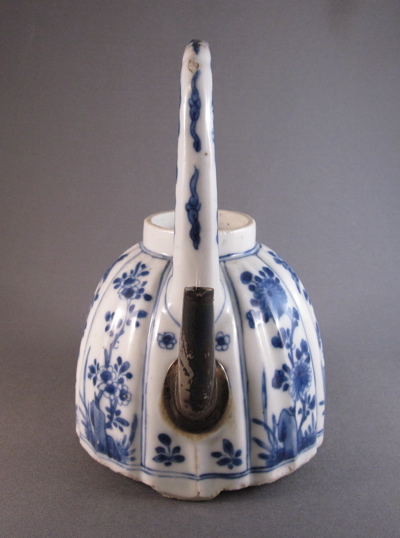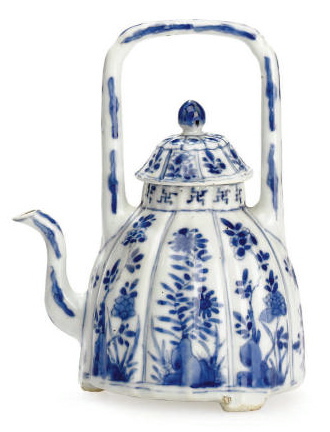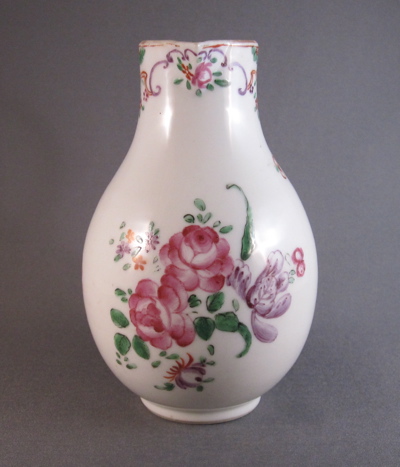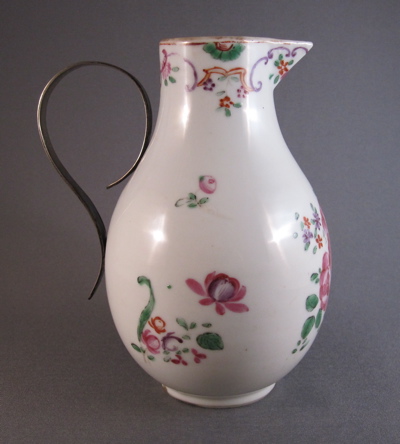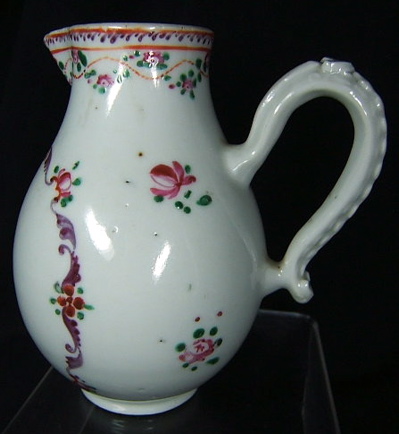English salt-glazed stoneware teapot decorated with brown iron-rich slip, attributed to S & H Briddon in Brampton, Derbyshire in the early 1800s. The lid has a pierced mushroom-shaped finial.
This small fluted form “bachelor’s teapot” measures 3-1/2″ tall and is 7″ wide from the end of the handle to the tip of the spout.
The metal replacement handle is secured to the body using two horizontal and three vertical metal straps.
Here is the exact same teapot showing its original handle, as found in Robin Emmerson’s book “British Teapots & Tea Drinking” (Crown, 1992)
This Chinese Qing Dynasty (1644-1911) Yixing teapot seems to be the inspiration for the English piece.
Photo courtesy of AntiqueTica
